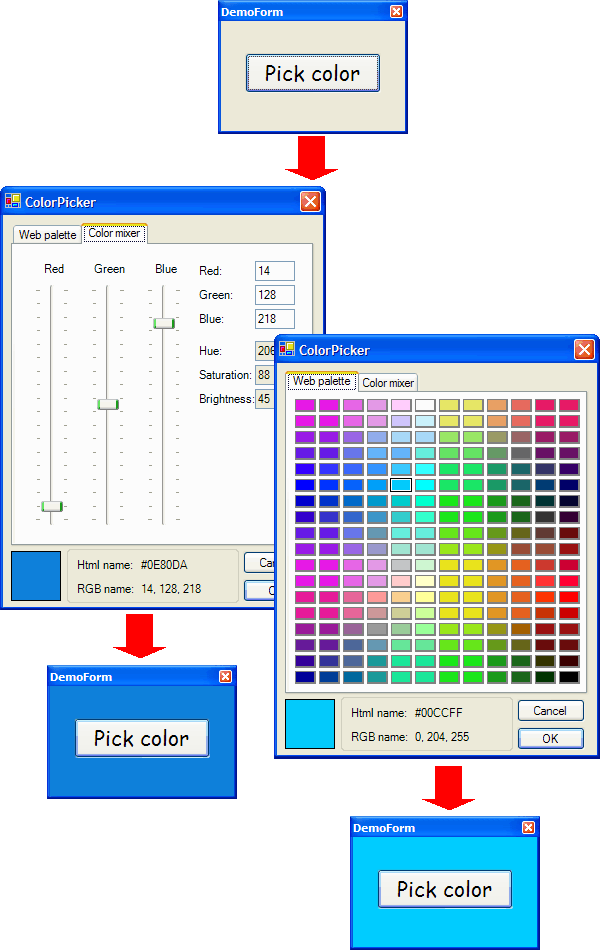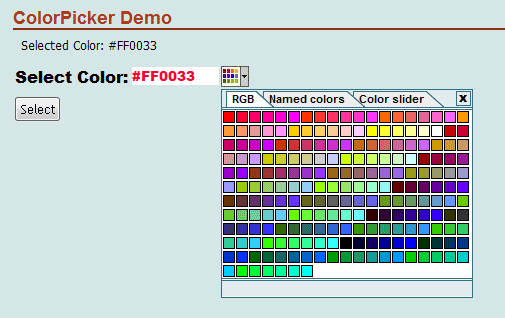

Protected override int GetPreferredWidth() PanelClosing?.Invoke(this, new System.EventArgs()) Internal event ColorPanelClosingEventHandler PanelClosing Protected override void OnKeyDown(KeyEventArgs e) Protected override void OnMouseUp(MouseEventArgs e) Protected override void OnMouseDown(MouseEventArgs e)

Protected override void Dispose(bool disposing) VB.NET Friend Delegate Sub ColorPanelClosingEventHandler(ByVal sender _Ĭ# internal class ctlColorPanel : WellPanel
#Colorpicker .net code
Name it anything useful, such as ctlColorPanel, because this will ultimately be the name of the object we will make use of in code and from anywhere on our Forms or other projects.Īdd the necessary Namespaces to include all the libraries we will work with.Ĭ# internal delegate void ColorPanelClosingEventHandler(object The reason why a User Control is more apt for this situation is because of versatility, and the ability to add our own Properties, Methods, and flavor to our project.Īdd a new Class to your project. We need to put this object inside a parent object, such as a panel, or a group control, or, even better, another User Control. This object just hosts all the various colors we would like to be able to choose from. It was a lot of work… What we will do today is to bring it all together luckily it is not so much work as the previous installment.Ĭurrently (if you have followed Part 1), we are sitting with the Color Wells object that we’ve created. NET, Part 1: The Color Wells,” we concentrated on creating the color wells. In Part 1, “ Creating a Custom Color Picker in.

Welcome to the second installment of this short series on creating your own color picker in.


 0 kommentar(er)
0 kommentar(er)
